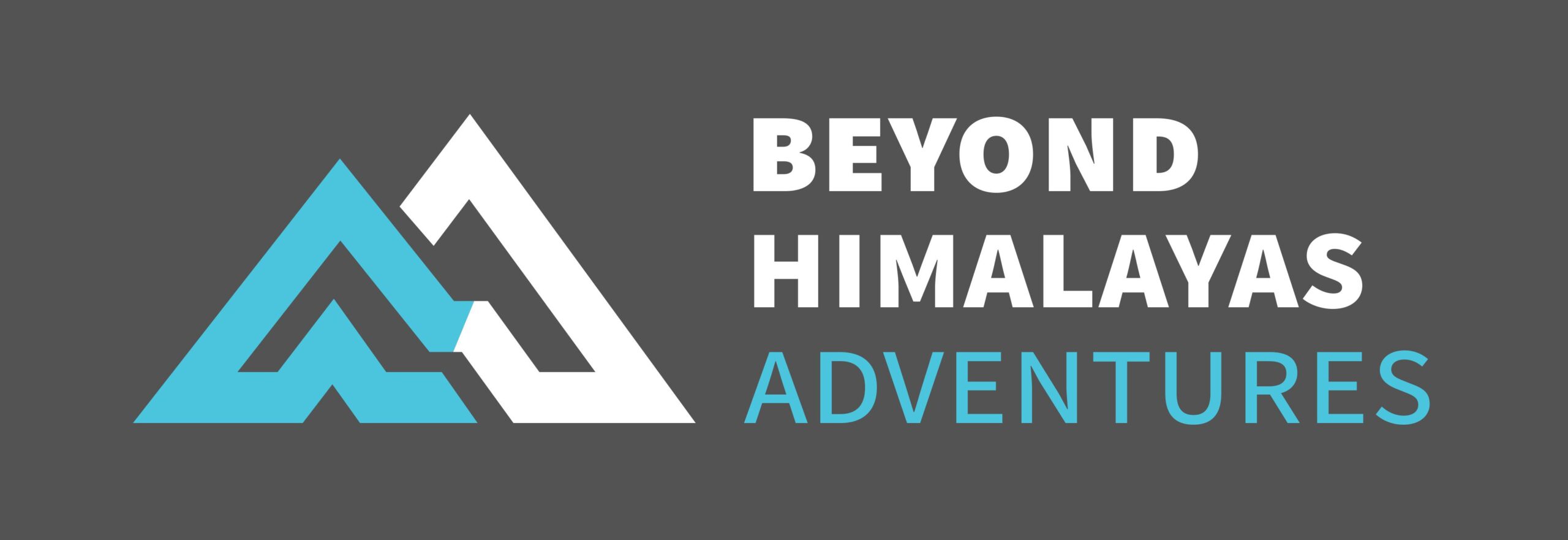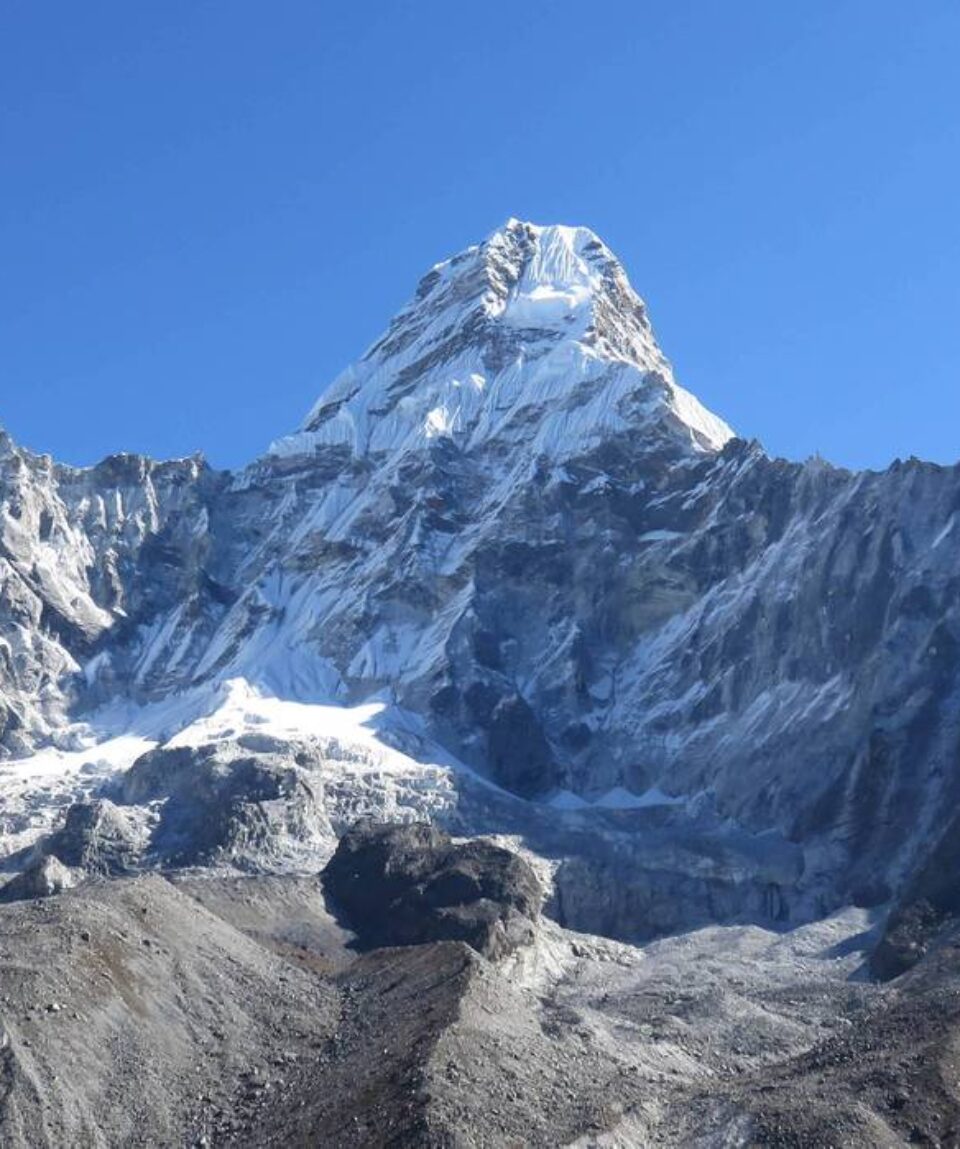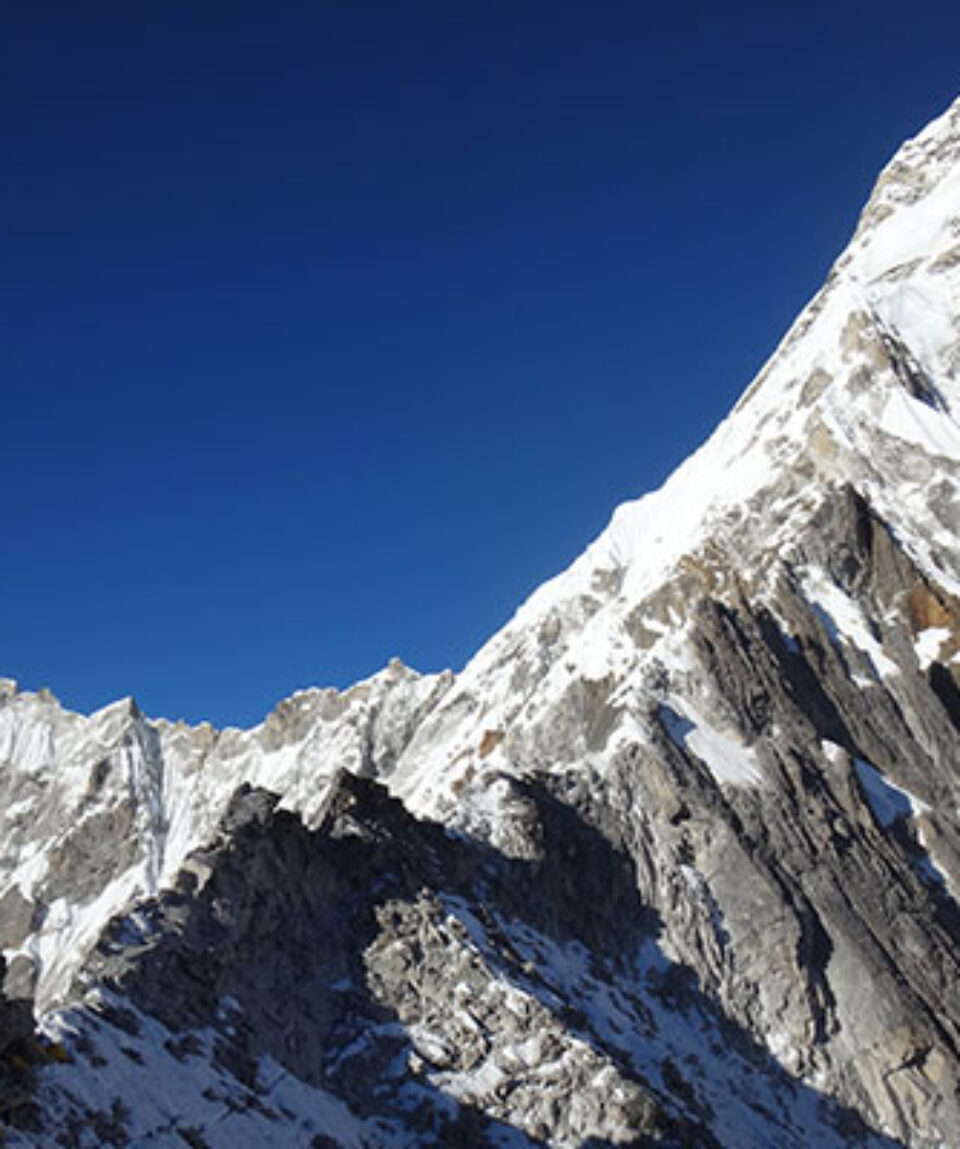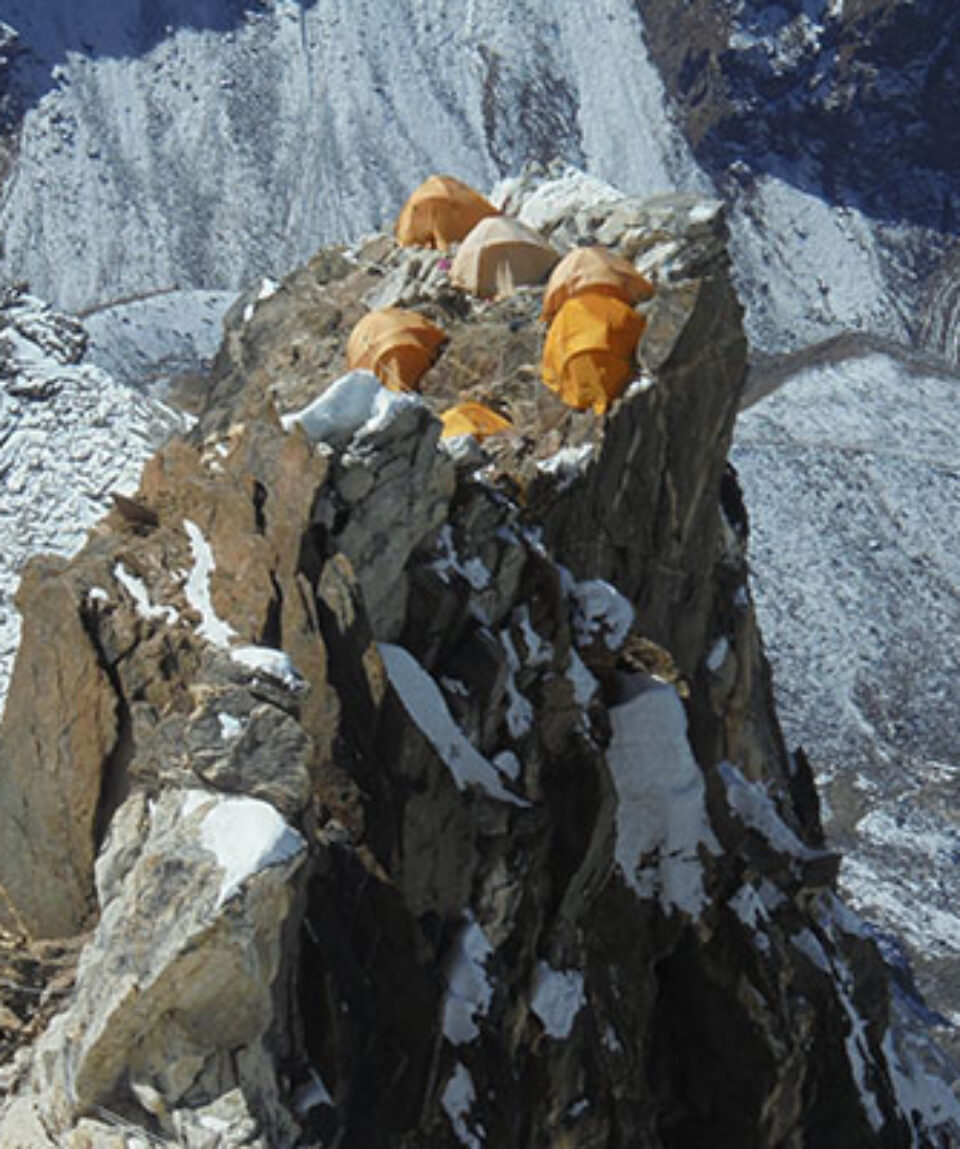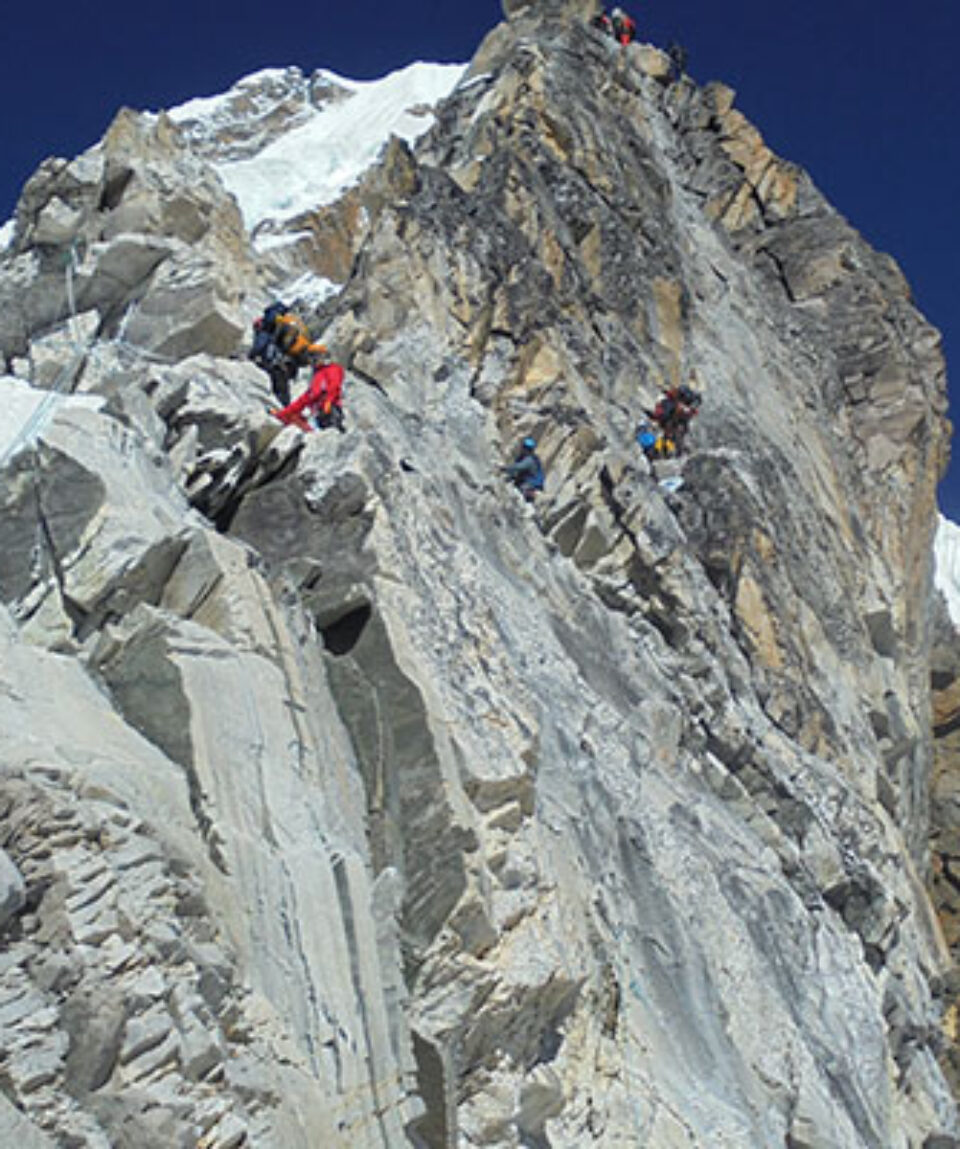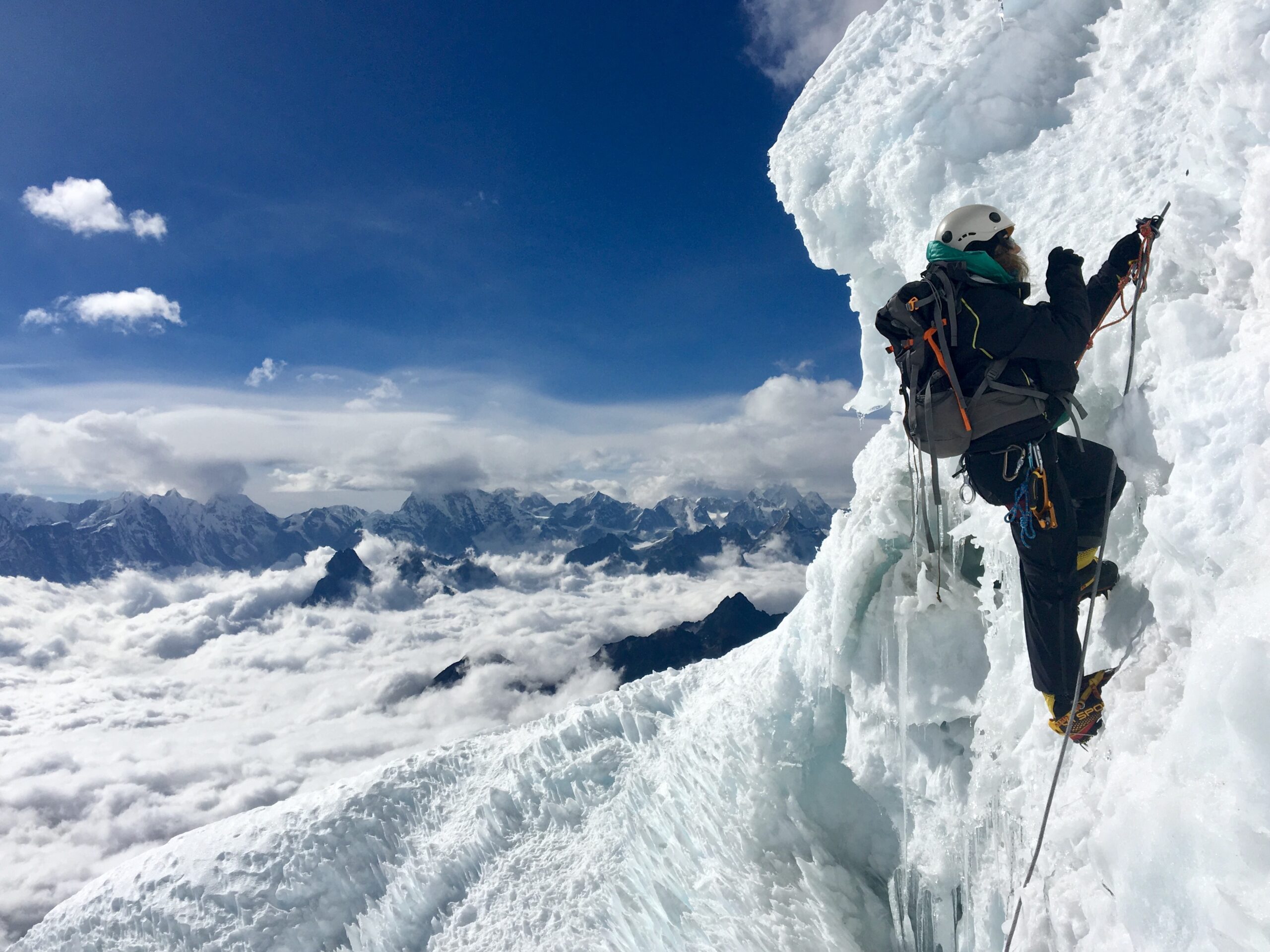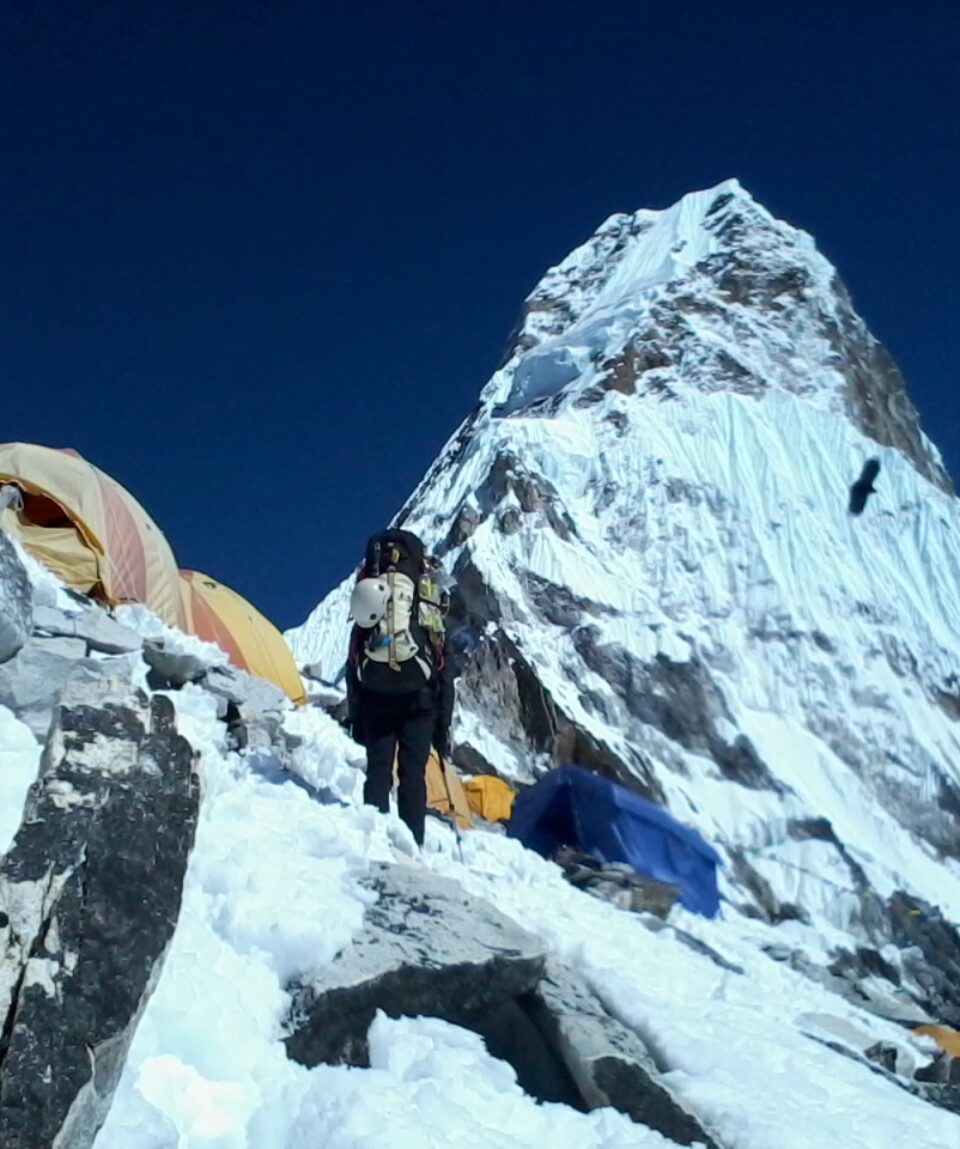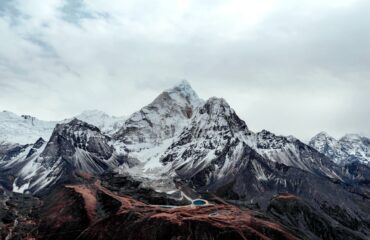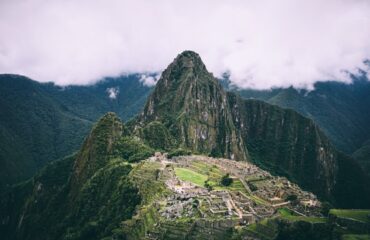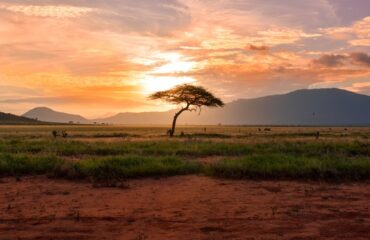Ama Dablam Expedition
fromA superb, moderately technical climbing experience on top of one of the world’s most impressive peaks in the Himalayas.
-
Reviews 0 Reviews0/5
-
Vacation Style Holiday Type
-
Hiking
-
Mountain
-
-
Activity Level Extreme
-
Group Size Medium Group
Ama Dablam is a mountain in the Himalayas range of eastern Nepal. Ama Dablam is regarded as one of the world’s most beautiful and sought-after peaks, alongside the Matterhorn and Khan Tengri. The main peak is 6,812 meters (22,349 ft), the lower western peak is 6,170 meters (20,243 ft). Ama Dablam means “Mother’s necklace”; the long ridges on each side like the arms of a mother (ama) protecting her child, and the hanging glacier thought of as the Dablam, the traditional double-pendant containing pictures of the gods, worn by Sherpa women. For several days, Ama Dablam dominates the eastern sky for anyone trekking to Mt Everest base camp and the Khumbu region. Amadablam expedition offers a moderately superb, technical climbing opportunity to ascend moderately technical, but very climbable snow, ice, and rock surrounded by stunning Himalayan views in a magnificent setting, with numerous cultural and scenic diversions.
The experienced mountaineer will find the South-East Ridge, which is the easiest route on the mountain, a good challenge. Although the height is only 6812m, it is considered one of the technically difficult expeditions in Nepal. The climbers need to have good skills in rock and ice climbing and be technically competent. On most parts of the routes, there will be fixed rope, however, the climbers should posses skills to climb through steep rock and hard water ice, and for the climbers who are climbing for the first time, we recommend acclimatizing on different trekking peaks like Island peak, Mera peak or Labuche East peak. Our itinerary is just a guideline and is subject to change at your preference.
As with Mt. Everest, the best climbing months are April–May (before the monsoon) and September–October
- All meals during trek. (breakfast, lunch and dinner)
- Accommodation during the trek at the local lodge.
- Domestic airfares and transportation from Kathmandu to the trek starting point.
- Boiled water at night during your trip.
- Oxygen for emergency evacuation at base camp
- English speaking government-licensed sherpa guide.
- All necessary pottering service
- 3 nights accommodation at 3-star category hotel in Kathmandu on twin sharing with breakfast.
- Climbing Sherpa licensed by Nepal Mountaineering Association for ama Dablam
- Guide cost including their (Salary, domestic airfare, equipment, food and accommodation, insurance )
- Ama Dablam Base camp support (kitchen boy, cook, tent) board service
- Legion officer’s fees.
- Ama Dablam climbing permits
- Garbage disposal fees
- All National Park fees
- Trekkers’ Information Management System fees
- All guided sightseeing tours in Kathmandu and entry fees.
- Airport transfers and escort.
- Staff cost including their (Salary, accommodation, insurance and fooding)
- Trekkers’ Information Management System fees
- All guided sightseeing tours in Kathmandu and entry fees.
- Airport transfers and escort.
- Insurance for all staff
- All ground transportation on comfortable private vehicle
- All government and local taxes
- International airfare
- Trekking and climbing Equipment
- Major meals, Lunch, and dinner during your stay in Kathmandu.
- Any type of personal expenses, such as alcoholic beverages and drinks, phone, and laundry.
- Airport departure tax and Entry visa fee.
- Rescue & travel insurance, trip cancellation costs, accident or health emergency, evacuation, loss, theft, or damage to baggage and personal effects.
- Tips & Gratuities to porters and guides and other extra activities
- We strongly advise you to take out personal travel insurance.
- Day 1 Depart Home Country
- Day 2 En route( transit)
- Day 3 Arrival in Kathmandu (1,350m/4,429ft)
- Day 4 Kathmandu sightseeing and Trek preparation (1,350m/4,429ft)
- Day 5 Fly to Lukla [2800m/9184m] [ & Trek to Phakding [2640m/8659ft] 4/5 hrs
- Day 6 Phakding to Namche Bazaar (3,440m/11,283ft): 5-6 hours
- Day 7 Namche Bazaar (3,438m/11,280 ft) acclimatization
- Day 8 Trek from Namche Bazaar to Pangboche [3930m/12893ft] 5/6 hrs
- Day 9 Trek to Dingboche (4,360 m/14304ft) 4-6 hours
- Day 10 Rest day and acclimatization day at Dingbuche [4410m/14468ft]
- Day 11 Trek from Dingbuche to Chhukung (4,730m/15,518ft): 3/4 hours
- Day 12 Rest day and acclimatization hike to Chukung Ri [5550m/18209ft] 4/5 hrs
- Day 13 Trek from Chukung to Amadablam Base Camp [4800m/15744ft] 4/6 hrs
- Day 14 Rest day at base camp
- Day 16 Climb to Yak Camp (17,000 feet/5,182 meters), 3-4 hours
- Day 17 Climb Yak Camp (17,000 feet/5,182 meters) to Camp 1 (18,500 feet/5,639 meters), 2-4 hours
- Day 18 Acclimatization Climb to Camp 2 (19,500 feet/5,944 meters) and return to Camp 1 (18,500 feet/5,639 meters), 4-6 hours round-trip
- Day18 Descend from Camp 1 (18,500 feet/5,639 meters) to Base Camp (15,000 feet/4,570 meters), 2 hours
- Day 19 Reserved day at Base Camp
- Day 20 Rest day at Base Camp
- Day 21 Climb Base Camp (15,000 feet/4,570 meters) to Camp 1 (18,500 feet/5,639 meters), 4-6 hours
- Day 22 Rest Day in Camp 1 (Optional)
- Day 23 Climb Camp 1 (18,500 feet/5,639 meters) to Camp 2.7 (20,800 feet/6,350 meters), 5-7 hours
- Day 24 climb Camp 2.7 (20,800 feet/6,350 meters) to Summit (22,525 feet/6,866 meters), return to Camp 2.7 (7-9 hours round-trip) or Camp 1 (12-15 hours round-trip)
- Day 25 Descend to Base Camp (15,000 feet/4,570 meters), 2 hours from Camp 1, 5-7 hours from Camp 2.7
- Day 26 Rest Day in Base Camp
- Day 27 Reserved day
- Day 28 Trek from Ama Dablam BC (14,500 feet/4,420 meters) to Namche Bazaar (11,300 feet/3,444 meters), 6-7 hours
- Day 29 Namche Bazaar to Lukla (2,800m/9,186ft): 6-7 hours
- Day 30 Fly back to Kathmandu
- Day 31 Contingency day for flights from Lukla to Kathmandu
- Day 32 Transfer to airport for final departure
The main emphasis while on the adventure is on keeping warm and dry while still being lightweight. You should bring a rucksack or backpack for the gear required during the day. Your pack should contain items such as warm clothes, a jacket, a camera, water bottles, a personal first aid kit, and snacks. The weight limit is 5kg. A porter will carry the rest of your personal equipment packed in a duffel or kit bag. The weight limit for your duffel bag is 15 kg however it is different in the case of peak climbing and expedition.
Ama Dablam requires various types of gear both technical and non-technical. It might be confusing what to or not to bring along on your expedition. So, we have made this Ama Dablam Equipment list to make your task easier.
Climbing Gear
- Ice Axe
- 12-point Crampons
- Climbing Harness
- Climbing Helmet
- Climbing Backpack: 70L
- Sleeping Bag rated to -20°F
Hardware
- 3 locking carabiners
- 4 lightweight regular carabiners — it is helpful if at least one of the locking carabiners has a “key gate”, like the Petzl Attache.
- Ascender with handle
- Petzl Tibloc
- 2 sewn 48″ nylon slings
- 10′ of 8mm perlon cord
- 1 small 5mm prusik loop
- Black Diamond ATC Guide is good since it can handle ropes from 7.7mm to 11mm
- Figure 8
Camp Accessories
- Headlamp with extra batteries
- Water Bottles X 2
- Water Bottle Insulators
- Water Treatment: Iodine tablets (Potable Aqua or similar) or iodine crystals (Polar Pure) or Steripen with extra batteries
- Insulated Cup, Bowl, Spoon
- Lighter
Footwear
- Double Climbing Boots with expedition liners or Triple boots
- Overboots
- Approach boots
- Gaiters and Yaktrax or Kahtoola Microspike
- Socks: Four sets of climbing socks
Clothing
- Insulated Parka: 800 Fill Down
- Insulated Pants: Down or Synthetic Pants with full length zippers are required for this climb
- Down Suit: You may elect to wear a down suit on summit day instead of Down or Synthetic pants
- Shell Jacket
- Gore-Tex Pants
- Mid Layers
- Climbing PantsBase Layers: 2 synthetic tops and 1 bottom
Outerwear Accessories
- Mittens: 8000-meter mittens
- Expedition Weight Gloves
- Light Gloves
- Leather gloves or good abrasion resistant climbing glove for the rock sections
- Winter Beanie
- Neck Gaiter and/or a Buff
- Baseball hat and Bandana
- Sleeping Pad or Thermarest
Personal Accessories
- Eyewear: Glacier glasses with side protection.
- Goggles x 2: One Dark Pair and one pair clear or yellow/orange tinted
- Vision correction
- Wrist Watch
- Basic First Aid
- Prescription Medications:
- Two regimens of antibiotics for respiratory and GI problems (azithromycin / “Z-Pak”)
- Diamox (acetazolamide) for acclimatization (125mg tabs recommended, enough for a week)
- Sleeping pills for jet lag
- Malaria Chemoprophylaxis, if needed based on travel plans
- Asthma medication, if any history (many climbers use Advair inhalers at high altitude to prevent Khumbu cough)
- nifedipine (for pulmonary edema)
- dexamethasone (for cerebral edema)
- Sunblock-at least #30 protection factor
- Garbage Bags: 2 or 3 large plastic bags make great liners for your pack in wet weather.
- Personal Snack Food-not more than 5 pounds
- iPhone and Kindle
- Pee Bottle
- Chemical Hand Warmers x 6
Travel Items
- Duffel Bags x 2
- Daypack
- Travel Wallet
- Passport
- Camera
- Casual Clothes
- Bathing Suit
Trekking Gear
- Trekking Poles
- Backpack
- Pack Cover
- 5 large plastic garbage bags to pack gear inside duffels to protect gear from rain
- Trekking Clothes
- Lightweight Approach Boots
